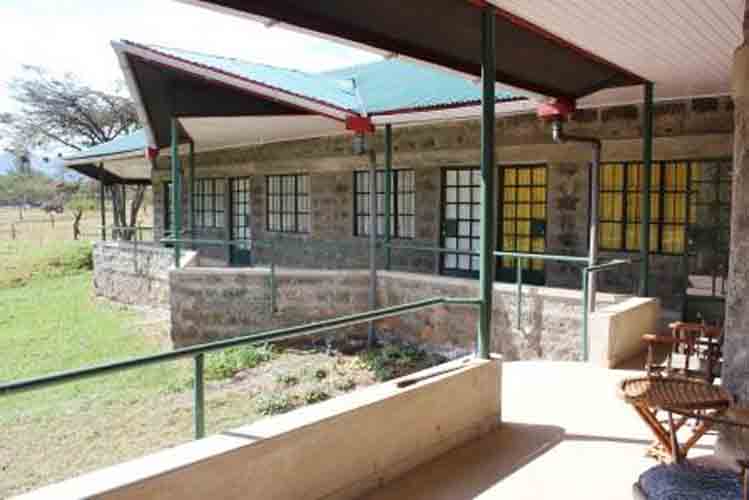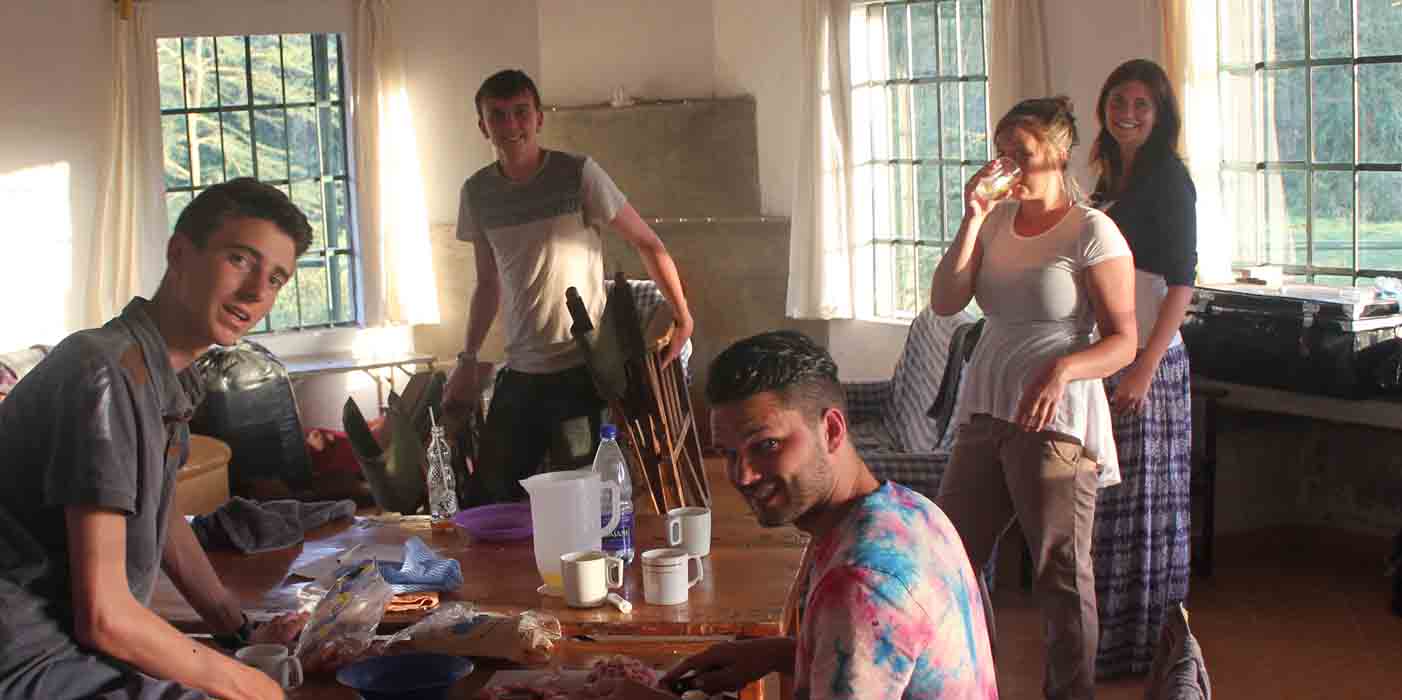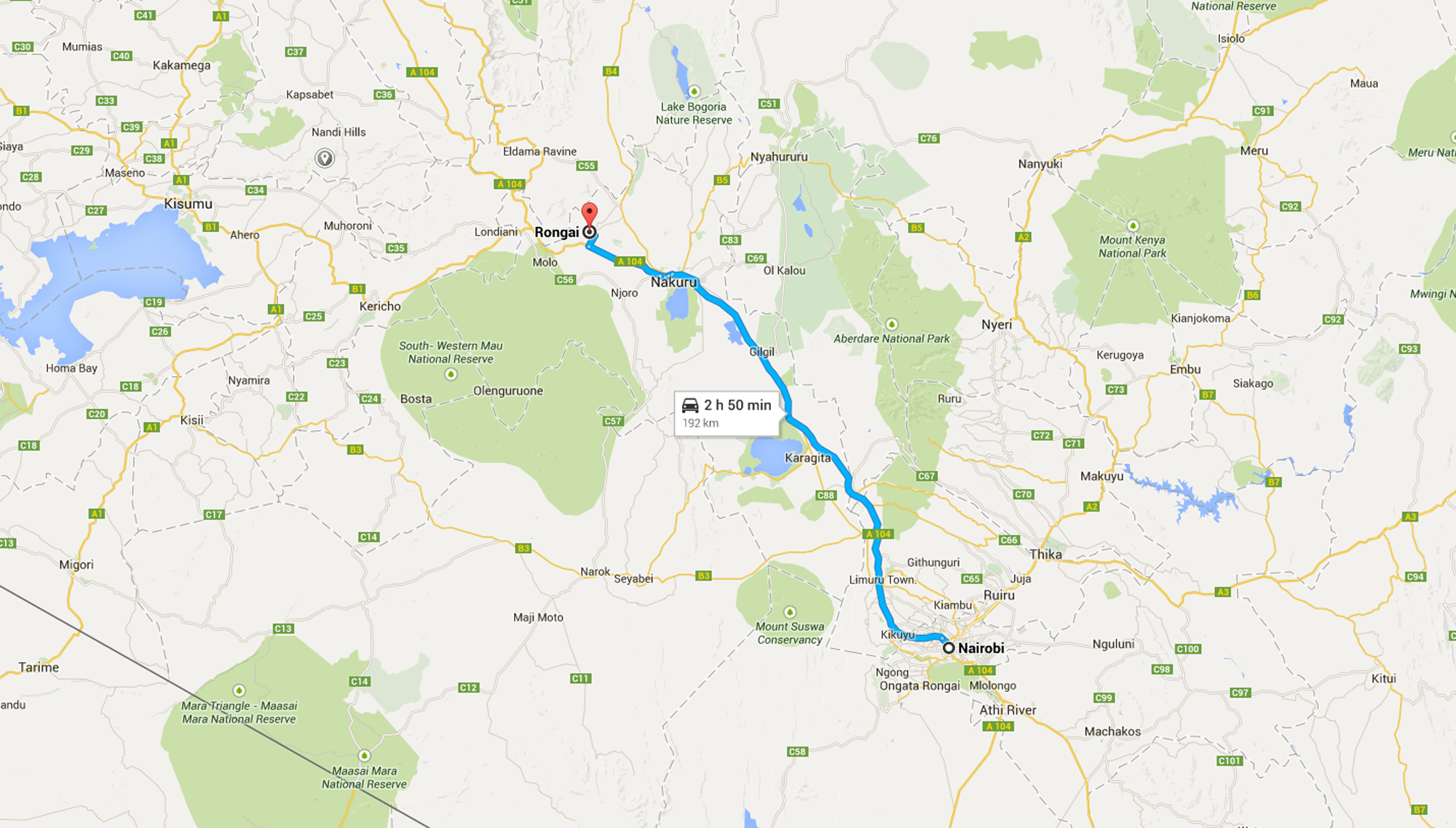Visit Us
Molo River House accommodation
Rongai is a great base for day trips to areas on interest in the Rift Valley. Molo River House, the accommodation, is spacious and secure in the middle of a working farm. The rooms have ensuites and there is a shady verandah for hot afternoons.
Within easy driving distance you can visit Lake Nakuru National Park, one of the gems of Kenya, Menegai Crater, the second largest surviving volcano crater in the world, Lake Bogoria and Lake Baringo. These are all different and contrasting spots and popular with local and international visitors.


Molo River House was completed in 2014 and is used for accommodation for volunteers. This is not all year round however and there will be periods during the year when it is available for visitors. Contact us at vanessagranttrust@gmail.com to enquire about availability.

Left and top: Molo River House. Above: Volunteers lunching together at Molo River House. The house sleeps up to 24 people comfortably and is situated in the heart of Gogar Farm.
Things to do in and around Nakuru and Rongai
Lake Nakuru National Park
The home of millions of flamingos, Lake Nakuru is at the center of a vital wildlife reserve for a number of animals, especially the white and black rhinos. Just over 25 black rhinos and 79 white rhinos live in the park, making it home to the largest number of black rhinos in the wild. Giraffes, lions, giraffes and other animals also call the wildlife reserve home. Safari’s are available for eco-tourists to see the animals in a safe environment. The safari is at the top of things to do in Nakuru.
Menengai Crater
For hikers with good shoes, a short eight-km drive from the city center is the Menengai Crater, a large dormant volcano. The rim of the volcano forms a long hiking trail, but,unfortunately, there are no guardrails and some parts can be risky to walk over. However, for people willing to risk it there are trails leading down into the caldera at the heart of the crater. It is 480 meters from the rim to the bottom so care must be taken. There are a number of underground caves for people to explore which are also used by religious people for fasting and prayer. In the wooded caldera it is sometimes possible to see steam vents, proving that the volcano still has some life to it.
Hyrax Hill
Hyrax Hill is one of the most important Neolithic sites in Kenya and one of the things to see in Nakuru. It dates back to at least 1500 B.C., and shows the remains of tombs, settlements and a fortress from various time periods. The site and its surrounding area has been excavated since 1937 and new discoveries are still being found every year. Hyrax Hill is open to the public, allowing tourists to see prehistoric nomadic remains, small permanent villages, and the beginnings of an Iron Age culture. A small museum is located on-site and stores the more fragile items. The exhibits are simple, but the models are well-done and explanations are understandable. A guided safari of the hill is available and is the best way to see everything.
Lake Bogoria
Lake Bogoria is a saline lake located approximately 70kms north of Rongai. It is a shallow lake with a maximum depth of 10m, covering an area of around 120kms2.
The lake forms part of the Lake Bogoria National Reserve, and has been listed as a Ramsar site. It is well-known for its geysers and hot springs dotted along the lake’s edge and within the lake itself. Some of the geysers around the lake erupt up to 5m high. Together with a handful of other well-known lakes in Kenya such as Lake Nakuru and Lake Elementeita, Lake Bogoria is at times home to one of the world’s largest populations of Lesser Flamingos. Lake Bogoria is a particularly popular destination for ornithology lovers and for those wanting to visit somewhere boasting spectacular African scenery but being less populated by tourists.
Lake Baringo
Lake Baringo is, after Lake Turkana the most northern of the Kenyan rift valley lakes, with a surface area of about 130km2. The lake is fed by several rivers, Molo, Perkerra and Ol Arabel and has no obvious outlet; the waters are assumed to seep through lake sediments into the faulted volcanic bedrock. It is one of the two freshwater lakes in the Rift Valley in Kenya, the other being Lake Naivasha. It lies off the beaten track in a hot and dusty setting and over 470 species of birds have been recorded there, occasionally including migrating flamingos.
